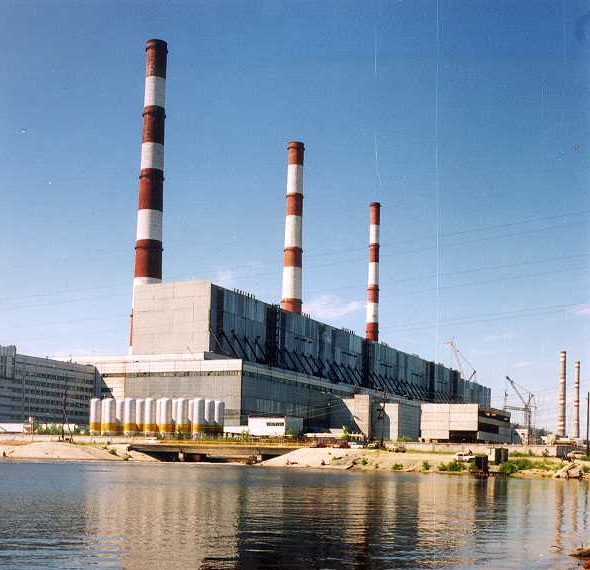Have you ever pondered how some power plants manage to achieve astonishing efficiencies, seemingly defying the laws of thermodynamics? Take, for instance, natural gas power plants, which are celebrated for their remarkable ability to convert energy into electricity at efficiencies close to 60%. This feat is not merely the result of advanced technology and cutting-edge engineering but also hinges on the fundamentals of energy conversion processes. In this article, we’ll elucidate how these plants operate and the science behind their impressive efficiencies, while examining the broader implications for green energy and climate change.
Natural gas power plants utilize a process known as combined cycle technology. This innovative system integrates gas turbines and steam turbines to harness the energy from natural gas more effectively than traditional coal or oil power plants. The journey begins when natural gas is combusted in the gas turbine, producing hot gas that spins the turbine blades. This process is akin to a whirlwind of energy converting the fuel’s potential into kinetic energy, resulting in rotating machinery that generates electricity.
If that sounds straightforward enough, get ready for a twist: the real magic happens in the “combined cycle” aspect. After the gas turbine has done its job, the exhaust—while still containing a significant amount of residual heat—doesn’t simply vanish into the atmosphere as waste. Instead, this leftover heat is diverted to a heat recovery steam generator (HRSG), where it is used to create steam. This steam then drives a steam turbine to produce even more electricity. Essentially, the natural gas power plant operates with a dual system that captures energy at two stages of conversion. This strategic reclaiming of heat boosts overall efficiency and mirrors a symbiotic relationship between fuel and technology.
So, let’s consider an intriguing challenge: what happens to this process when we push for even greener alternatives, and how can we further optimize the efficiency of natural gas power generation? This question becomes increasingly significant in a world striving for sustainability. While natural gas is often touted as a cleaner alternative to coal, it is by no means devoid of environmental impact. Addressing concerns regarding methane leakage—an issue particularly relevant in the natural gas supply chain—can make or break the credibility of this energy source in the green energy framework.
To appreciate the efficiency of natural gas plants further, let’s delve into some intriguing figures. A conventional coal power plant generally operates at around 33% efficiency, meaning much of the energy derived from coal is lost as waste heat. In contrast, natural gas plant efficiencies can exceed 50% with traditional cycles, but combined cycle systems can elevate this to nearly 60%. This improvement stems not only from the technology itself but also from the inherent properties of natural gas, which contains a higher energy content per unit of weight compared to coal.
More importantly, natural gas emits significantly lower amounts of carbon dioxide compared to coal and oil. The value of this cleaner-burning fuel in mitigating greenhouse gas emissions cannot be overstated, especially as the global community grapples with climate change. In practical terms, this means that, while we transition away from fossil fuels, natural gas can serve as a bridge energy source—facilitating the shift toward more sustainable technologies like solar and wind energy.
However, as we bask in the relative advantages of natural gas, we cannot overlook the geopolitical implications and the environmental costs associated with extraction processes such as hydraulic fracturing, or “fracking.” The debate rages on: how do we balance energy demands and technological advancements with sustainability and ecological stewardship? This is where innovative thinking must come into play. For example, as industries seek to modernize infrastructure, a noteworthy strategy could involve retrofitting older power plants to accommodate mixed energy sources, though that presents its own set of challenges.
As technology continues to evolve, new methods to improve the efficiency of natural gas power plants emerge. Carbon capture and storage (CCS) technology stands out as a beacon of hope for reducing emissions. CCS involves capturing carbon dioxide emissions produced from power generation before they can enter the atmosphere, then transporting and storing this gas underground in geological formations. While promising, the implementation of CCS requires substantial investment and technological advances to scale effectively.
Moreover, innovative designs, such as integrating energy storage systems, can provide yet another avenue for optimization. For instance, pairing natural gas generation with battery storage enables power plants to manage supply and demand more flexibly, ultimately enhancing reliability and efficiency. The challenges of energy production are complex, multifaceted and ever-evolving. How we navigate the transition towards greener energy sources will indubitably shape the future of energy production.
In essence, the remarkable efficiency of natural gas power plants—achieving close to 60% efficiency through combined cycle technology—offers a respite from the carbon-heavy practices of the past. Still, it also highlights the imperative for conscientious exploration of all aspects of energy production and consumption. As the world increasingly seeks sustainable energy solutions, natural gas may serve as an interim remedy, albeit with caution against its long-term viability as the ultimate clean energy source.
So, could it be that the natural gas power plant is merely a pit stop on the longer journey toward a carbon-free future? Only time will tell, but one thing is certain: the quest for efficiency and environmental stewardship will define the next chapter in the energy saga.
